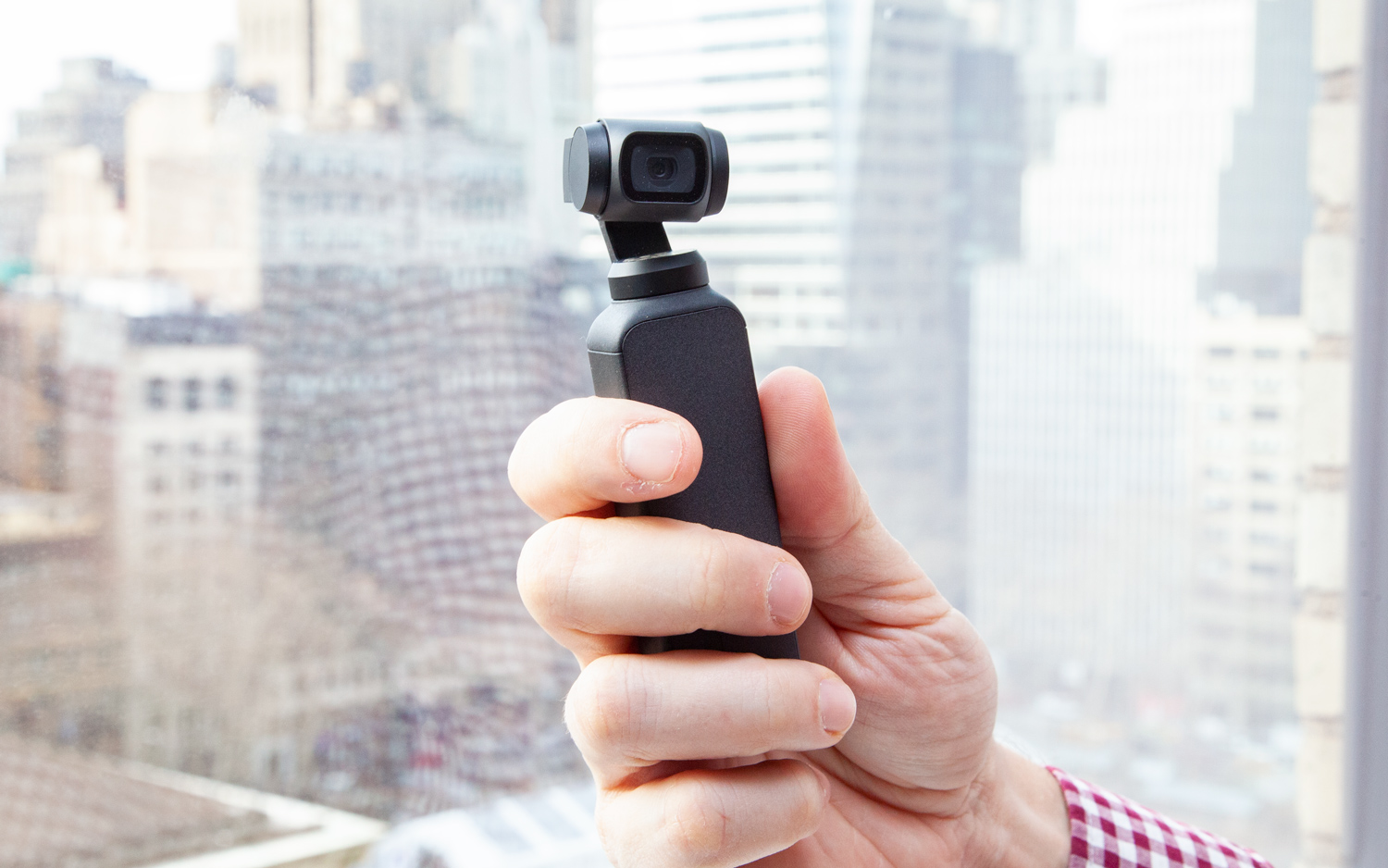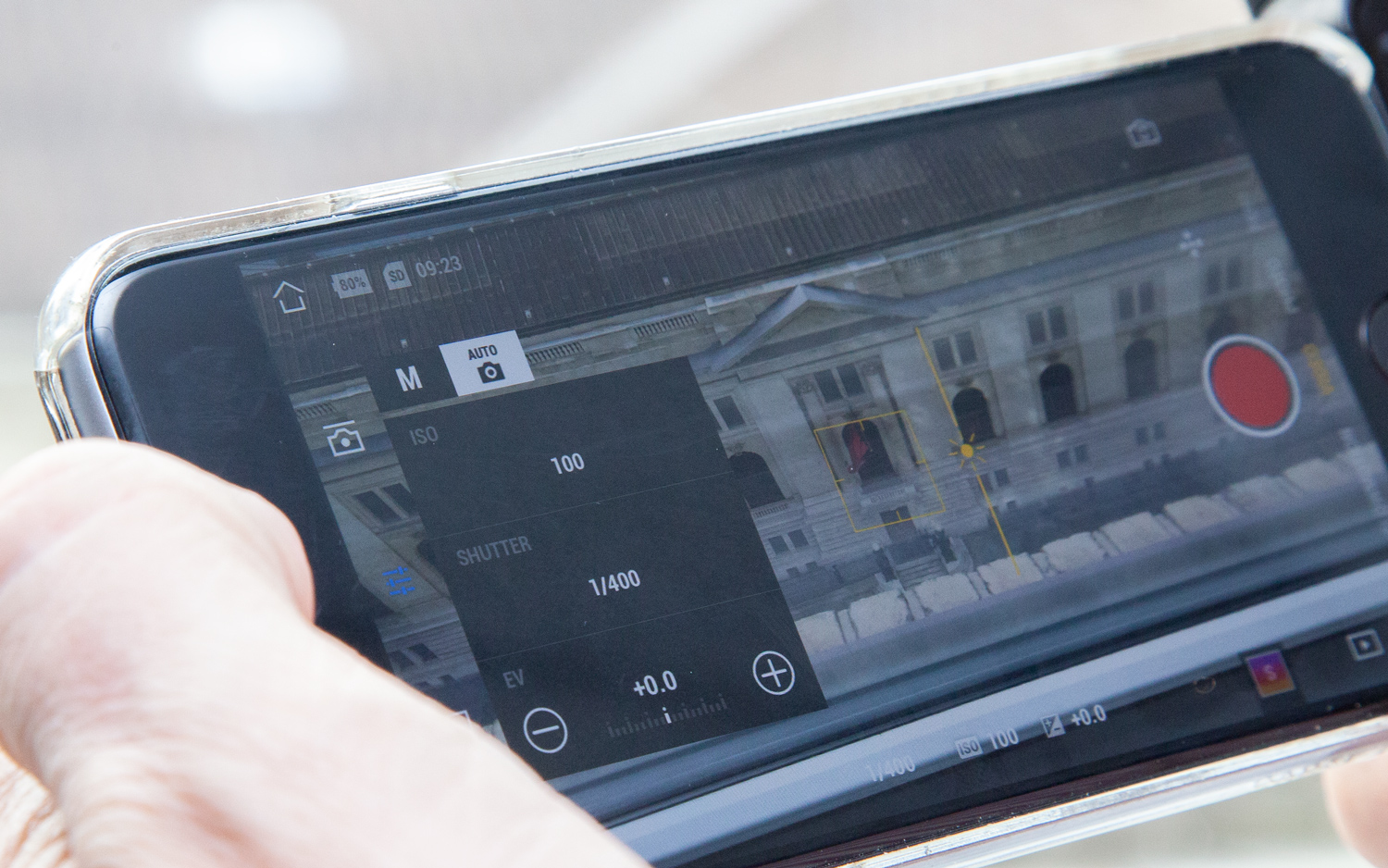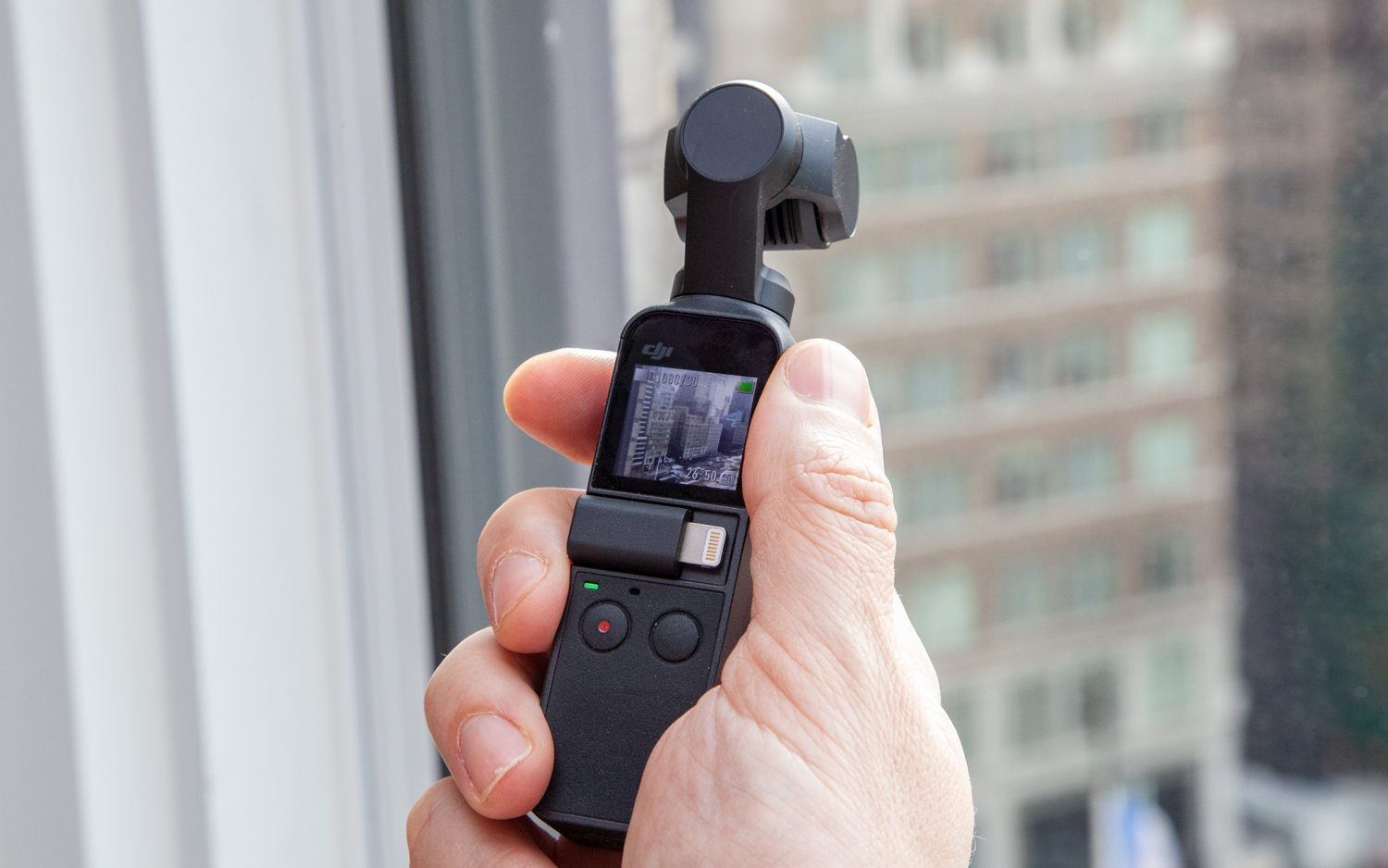Tom's Guide Verdict
The DJI Osmo Pocket is a tiny camera that can fit in your pocket and take really smooth video, but it's not for everyone.
Pros
- +
Good-quality video and photos
- +
Gimbal lets you take very steady video
- +
Robust controls and features
Cons
- -
Moving gimbal can get damaged
Why you can trust Tom's Guide
To get the smoothest video, videographers often attach their camera to a gimbal, which uses a gyroscope and moving arms to keep the shot steady no matter how much they (or the camera) move around.
While consumer-grade gimbals are inexpensive — you can get a good one for around $140 — they're a niche product. Who wants to carry around an extra gadget and take the time to attach it to their camera or smartphone?
DJI thinks it has found an answer with the Osmo Pocket. This diminutive device combines a gimbal and camera, and is small enough to slip into any pocket. It also has a lot of cool features that can make your home movies look like they were shot by Martin Scorsese — hence why it makes it into our list of the best cameras for vlogging. But the features that make it unique could also deter more casual shooters.
Osmo Pocket Design: Cute and Sturdy
The Osmo Pocket is like a DJI drone without the wings and rotors. At the top of this candy bar-sized device is a camera on a three-axis gimbal, not unlike the one on the Mavic Air. The body of the Osmo Pocket has a small color touch screen toward the top, with two buttons below it to turn the gadget on and off, and to start and stop recording.

Between the screen and the buttons is a small slot into which slides a Lightning or USB connector (both included) for when you want to attach your smartphone to the Osmo Pocket.
On one side of the Osmo Pocket is a microSD card slot, and on the bottom is a USB Type-C port; here, I wish there had been room to include a tripod mount.
Despite its small size, the 4.2-ounce Osmo Pocket has a nice heft, and when you turn it on, the camera gimbal swivels into action in a second.
Tiny Touch Screen
The Osmo Pocket's touch screen is functional but tiny. It provides a live view of what the camera is capturing, and through numerous swipes, you can change pretty much every setting on the camera. It also has a handy function for selfie addicts: A single button press turns the camera 180 degrees, so it's facing you.

Swipe to the left, and you can change shooting modes (Photo, Video, Slow Mo, Timelapse, Pano). Swipe right to view your saved footage, swipe up to change camera and gimbal settings, and swipe down to access even more general settings. DJI made it as intuitive as it could, but it's still tedious.
While it's definitely bulkier, using your smartphone's display as the viewfinder makes it much easier to access all of the Osmo Pocket's controls. You also get a few extra features; for example, when you're using the Osmo's touch screen, you can only pan the camera up and down. With your smartphone, you can move it in any direction.
Using a smartphone with the Osmo also gives you expanded camera controls, such as adjusting the photo format (JPEG or RAW), white balance, histogram and more. Even more helpful are manual controls for aperture, shutter speed and ISO.
MORE: Best Action Cameras
Also in the app is Story Mode, which will automatically stitch together multiple clips and photos into a movie. You can pick from a number of different themes, including Leisure, Fashion, Cut, Lively, Party and Rhythm.
Excellent Image Stabilization
The allure of a gimbal-equipped camera is its promised ability to capture stable video, no matter how bumpy the ride. And the DJI Osmo Pocket delivers. I attached the camera to a strap on the back of my dog Hunter, and then ran him around a park. I estimate that the Osmo Pocket flopped 45 degrees from side to side as he ran, yet the footage from the camera was nearly as stable as if he had been standing still.
When compared with the Insta360 One X, which uses a combination of electronic image stabilization and a 360-degree image to get smooth video, the Osmo was just as good, if not better, in terms of overall image quality.
I also tried the same running-dog test with the GoPro Hero7, which also uses electronic image stabilization. While the GoPro was able to smooth the video somewhat, Hunter's running was too bouncy for it to fully compensate for the movement.
MORE: Who has the smoothest video?
Despite its performance, I would be extra-cautious using the Osmo Pocket during more extreme sports such as skiing. Unlike a GoPro or the Insta360 One X, which have no moving parts, I'd be afraid of damaging the Osmo Pocket's gimbal if I fell. In fact, one of my colleagues who was also testing an Osmo Pocket dropped the device and damaged the gimbal enough so that it wouldn't turn fully.
Camera Performance
As to specs, the Osmo Pocket has a 1/2.3-inch sensor, can take video at up to 4K/60 frames per second and can take images up to 12 megapixels in size.

A Panorama mode took three photos in quick succession (you can also take a nine-photo pano) and stitched them together for this expansive view of Grand Central Terminal. The Osmo Pocket slowed down the shutter speed, but overall captured a bright, crisp image. The clock in the center and some other areas were a bit washed-out, though.

When I took a standard photo with the Pocket, brighter areas were also overexposed. As with the Panorama mode, the camera slowed the shutter speed to 1/10th of a second (at ISO 400, f/2.0), which blurred people moving in the frame, but still kept the building nice and sharp.

DJI was smart to import some camera features from its drones, including Active Track and Face Track: Draw a square around the person you want the camera to follow, and the Osmo will keep them in frame as you — or they — move around.
Osmo Pocket Accessories
DJI will sell a number of accessories, including a wireless module ($59) that lets you control the Osmo Pocket remotely using your smartphone; and a controller wheel ($59) that makes it easier to control the gimbal. Other accessories include an extension pole, an underwater case and a GoPro mount adapter.
Battery Life
The Osmo Pocket's 875-mAh battery should last for about 2 hours when shooting 1080p video and 1 hour when shooting 4K. That's roughly comparable to the GoPro7 at both resolutions.
Bottom Line
The Osmo Pocket isn't the first all-in-one camera-and-gimbal device, but its small size and wealth of features make it a very intriguing product. It works incredibly well and has a great set of features that will make it an essential part of any influencer's tool kit. However, what sets the Osmo Pocket apart, well, sets it apart.
Generally, when I'm shooting casual video using my smartphone, I'm not moving around all that much, so the benefits of having a separate motion-stabilized camera aren't all that great. When it comes to action sports like skiing, I would be leery of using the Osmo Pocket: Not only is it not waterproof, but damage the gimbal and you're sunk. While the GoPro Hero7's motion stabilization isn't as effective, it has a more rugged design and no moving parts.
But, for those who need a compact camera to shoot very smooth video — and don't plan to knock it around too much — the DJI Osmo Pocket is incredibly capable.
Credit: Tom's Guide

Michael A. Prospero is the U.S. Editor-in-Chief for Tom’s Guide. He oversees all evergreen content and oversees the Homes, Smart Home, and Fitness/Wearables categories for the site. In his spare time, he also tests out the latest drones, electric scooters, and smart home gadgets, such as video doorbells. Before his tenure at Tom's Guide, he was the Reviews Editor for Laptop Magazine, a reporter at Fast Company, the Times of Trenton, and, many eons back, an intern at George magazine. He received his undergraduate degree from Boston College, where he worked on the campus newspaper The Heights, and then attended the Columbia University school of Journalism. When he’s not testing out the latest running watch, electric scooter, or skiing or training for a marathon, he’s probably using the latest sous vide machine, smoker, or pizza oven, to the delight — or chagrin — of his family.

